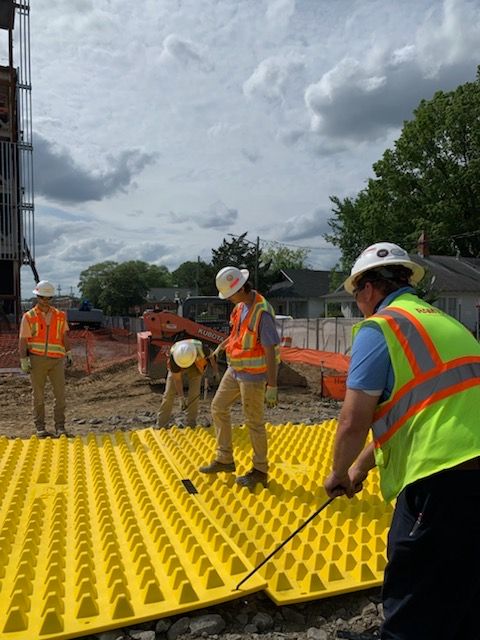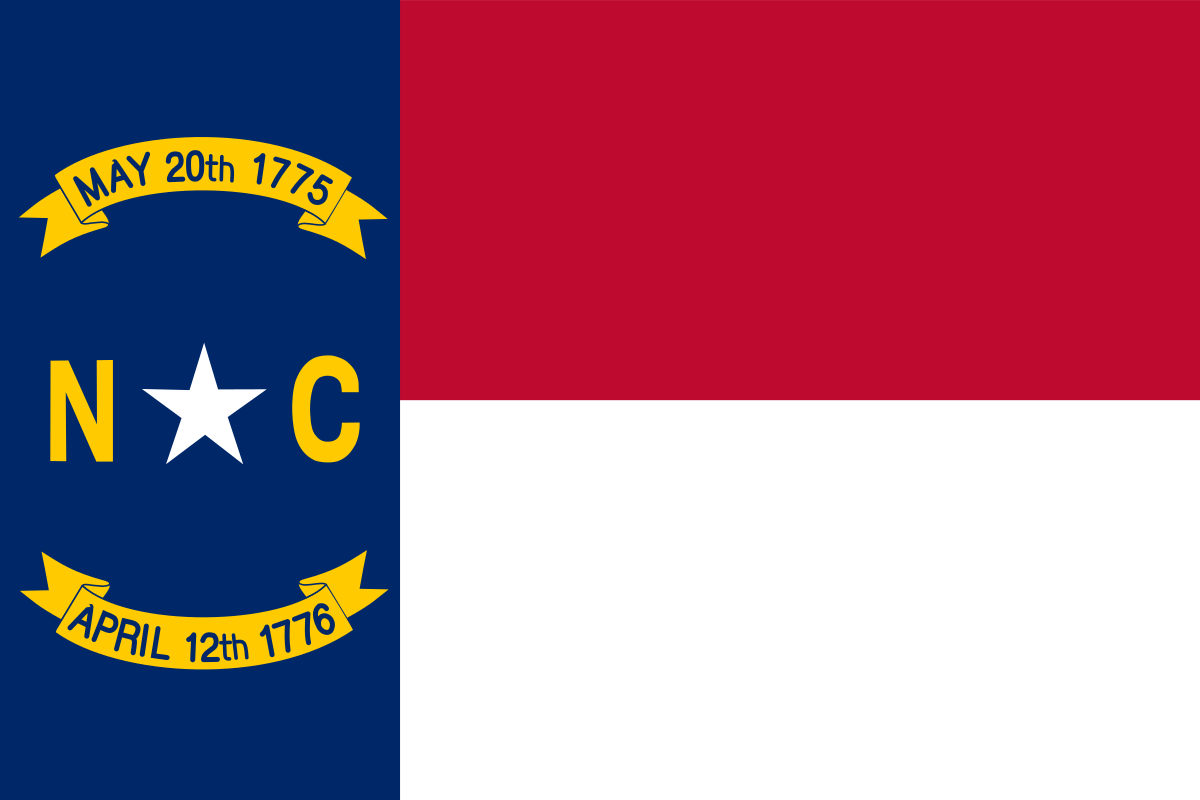North Carolina Stabilized Construction Entrance
North Carolina places a high value on the various natural resources including the surface waters contained in the rivers, lakes and coastal zones. Various federal and state programs are in place to ensure that pollution sources from construction and industrial sites do not degrade the water quality or threaten the natural ecosystem.
North Carolina Department of Environmental Quality
The North Carolina Department of Environmental Quality (DEQ) is the lead stewardship agency for the protection of North Carolina's natural resources. The organization administers regulatory programs designed to protect natural resources through various divisions focused on air quality, marine fisheries, waste management, and water resources. To protect surface waters, the Department of Environmental Quality administers the NPDES permit program under the Clean Water Act. The North Carolina DEQ offers technical assistance to businesses, farmers, local governments, and the public as they plan and prepare for construction, industrial or municipal operations. The Federal EPA issues NPDES permits within tribal lands of the Eastern Band of Cherokee Indians.
DEQ Construction Stormwater Program (NCG01)
The NPDES Construction Stormwater Program applies to construction activities that disturb one acre or more or are part of a common plan of development of that size. North Carolina has two general permits: The NCG01 applies to projects subject to the DEMLR Sediment Program, while the NCG25 that are not subject to DEMLR but are instead regulated by the broader federal Clean Water Act. DEMLR stands for the North Carolina Division of Energy, Mineral and Land Resources. The permit programs require each construction and industrial operator to obtain a permit before breaking ground.
The application process to obtain a permit requires submission of a Stormwater Pollution Prevention Plan or SWPPP. A SWPPP includes a list of identified pollution source as well as the measures which will be taken to mitigate or contain the pollutants on-site. Each practice outlined in the SWPPP is called a Best Management Practice or BMP. Storm drains not filtered before they reach the surface waters, so care is taken to prevent sedimentation and pollution from being deposited on impermeable roadways where rain will wash the sediment into storm drains. For this reason, one of the first BMPs which is established on construction projects is the Temporary Construction Entrance to minimize sediment that is tracked off-site onto these impermeable roadways.

North Carolina Temporary Gravel Construction Entrance/Exit
The Erosion and Sediment Control Planning and Design Manual describes an example construction entrance. A Temporary Gravel Construction Entrance/Exit is a graveled area or pad located at points where vehicles enter and leave a construction site onto public roadways. The gravel used should be 2-3-inch washed stone, and the pad mats be at least 6 inches thick, 12 feet wide, and 50 feet long with a wide turning radius for exiting traffic. In addition, all construction traffic must be restricted to using the temporary gravel construction entrances throughout the project. When choosing and preparing the locations for site access, steep grades should be avoided and the exit points should not be located on a curved portion of the roadway. This pad will also require periodic topdressing to remain effective and the roadway should be swept to removal all material that is spilled, washed, or tracked onto public roadways.
If conditions at the site are such that most of the mud and sediment from vehicles traveling over the gravel are not sufficiently contained on-site, the operator should incorporate additional BMPs for sediment containment. A wheel wash is a commonly used BMP to supplement the temporary gravel construction exits. Washing should be done on an area stabilized with crushed stone that drains into a sediment trap or other suitable disposal area. A wash rack may also be used to make washing more convenient and effective.

FODS Track out Control Mats
FODS Trackout Control System is a simple, cost-effective alternative to the traditional temporary gravel construction entrance. The FODS system is comprised of matting made of high-density composite material that has pyramid shaped features on the surface which are specifically designed to remove debris from vehicle tires in all conditions. The pyramids manipulate vehicle tires to flex and deform the treads removing sediment stuck between tire treads. The debris is collected at the bottom of the mat for easy clean up. When it rains or the sediment fills up, the mat can be clean to restore full functionality using a skid steer with a broom attachment or manually using the FODS shovel. The effective system is designed to operate without supplemental BMPs and can mitigate the need for an additional wheel wash station and sediment trap.
The standard 1x5T layout is commonly used to replace temporary gravel construction entrances up to 70’ while providing a turning radius for construction vehicles exiting the site. FODS mats can be installed on soil, concrete, and asphalt without the need for excavation or heavy machinery. The FODS system’s rockless design provides a safer and more manageable way to remove material from construction vehicles particularly when traffic exits onto active roadways. These mats are designed to be installed and relocated and are able to withstand more than 10 years of use.
Additional Resources:
North Carolina Department of Environmental Quality
North Carolina Erosion and Sediment Control Planning Design Manual
North Carolina Erosion and Sediment Control Field Manual
North Carolina Erosion and Sediment Control Inspector Guide
North Carolina Erosion and Sediment Control FAQs
North Carolina Erosion and Sediment Control NPDES Construction Permits
NCG01 General Permit with DEMLR Sediment Program
NCG25 General Permit without DEMLR Sediment Program
EPA North Carolina NPDES Permits

